Rainy Mountain Charlie
1 1/10th scale resin and White Metal bust from Poste Militaire
Article printed in Military In Scale in 1999
Rewritten with available photos in 2024

At a time when a lot of true busts were straight up-and-down clothes horses, the release of this bust from Poste Militaire was a revelation. It’s popularity from the get-go was understandably very high.
Poste Militaire ceased trading about twenty years ago, but some of the moulds and casting rights were taken over by Dave Freeman Bonaparte’s Miniatures.
Of the many things that Poste Militaire was noted for – excellent sculpting, accuracy of uniform details and a very high quality production values were all on the list of what you could reliably expect when purchasing one of their kits. Dave Freeman has continued this, I am happy to report.
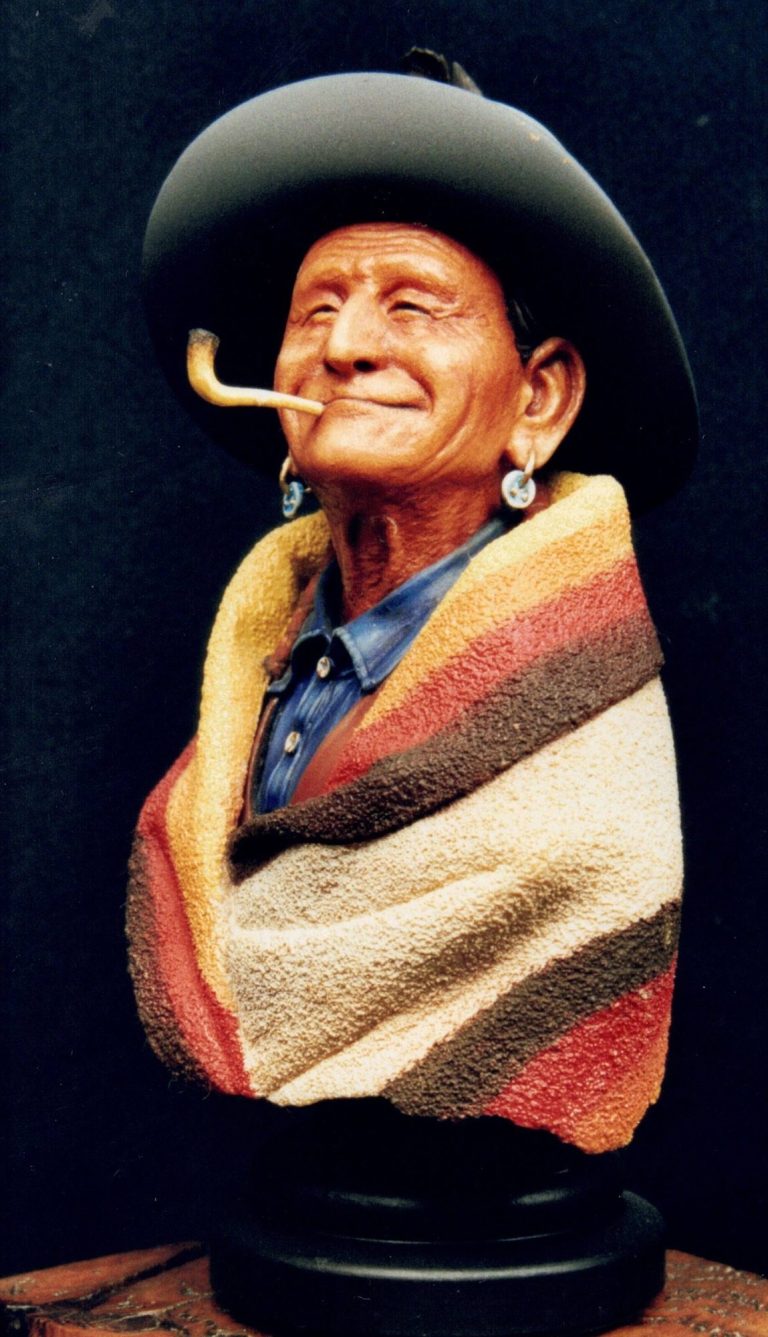
Poste Militaire was noted for it’s excellent Napoleonic offerings, with occasional ventures into other areas of history, and one fantasy piece of a Giant Killer that I can remember.
“Injuns” hadn’t really featured in the catalogue until the first of this series burst onto the scene in the form of The Blood Warrior.

That all ended when there was a big advertising splash for the Blood Warrior, which was the first release in the line of Native American busts.
A Pawnee Brave followed, and then this diminutive kit arrived and people just went mad for it.
The box art was painted by Rob Henden, and I pretty much followed that for my colour scheme.
But let’s not get too far ahead of ourselves.
The casting is a mix of Resin and White Metal parts, with minimal clean-up necessary. The texture on the blanket wrap that slots over the bust is heavily textured, and to be honest was a somewhat new concept at the time, almost all of the kit’s I’d encountered up to this point had possessed smooth surfaces on their clothing, the only exceptions being the very large scale busts offered by Fort Royal Review.
Whilst I did write an article for this piece back in 1999, I have since lost the text that I wrote back then, so I’m rewriting this from memory. I didn’t take many “in progress” shots, but the painting was pretty simple, so I don’t think that you’ll miss much by their lack of presence here.

Shown in photo #1 are the main components of the kit, still separated, but having been painted.
The hat comes it two pieces, the brim being separated from the bowl on the hat, the joint being hidden by the hatband.
The construction of the kit is very clever, the thin blanket section slotting over the top of the head and sitting very positively on the shoulders of the bust, and then the hat being added.
There are a couple of small parts not shown here – a feather for insertion into the hatband, and a small clay pipe to slot into the small hole to the right of centre of his lips.
Of note here is the relative lack of detail on the shoulders, which is completely hidden by the trade-blanket cloak, the very accurate texturing of an old man’s wrinkled skin, and the aforementioned texture on the trade blanket.
Poste Militaire brought out a book that focused solely on trade blanket designs that were made for the bartering system that settlers in the frontiers had with the Native American tribes, and the book, whilst focusing on a very specific subject, matched the quality of the figure range. And yes, I bought a copy and have found it very useful in the intervening years.
Painting is a joy on this kit. Honestly, I reckon that you could almost pour paint into the box and give it a shake, and you’d get a decent finish; the model almost paints itself, the sculpting is that good.
I have to admit that I began with what I knew and was comfortable with, in that I brush painted the face, shirt and hat, before tackling the Trade Blanket with an airbrush.
The face was a darkened mix of my usual flesh tones, and I based it on pictures of elderly people from the Mediterranean and Native American cultures – that heavily wrinkled and sun-weathered skin of the senior citizens that are so often seen sitting, watching the world go by.
The sculpture of the face is complex, but offers two options. The simple one of using washes and layers of light drybrushing to bring out the shadows and highlights, repeatedly going from one method to the other to gradually bring out all that lovely detail. Or alternatively – and the method I chose – to paint the face, in my case with oils, and spend hours happily working on all the fine details with a very fine brush and a tongue firmly fixed in the corner of one’s mouth.

Photo #2 shows this process part of the way through, with the hat test fitted and the hair and denim shirt blocked in and details on them starting off too.
The shirt was painted with oil colours, beginning with Indigo lightened with a little Buff Titanium, and painting this over GW Moody Blue acrylic. Once I’d painted the oil colour on and got it into all the recesses of detail, I then added more of the Buff Titanium to build up mid-tones and highlights, blending the pale cream colour in with a small soft brush.
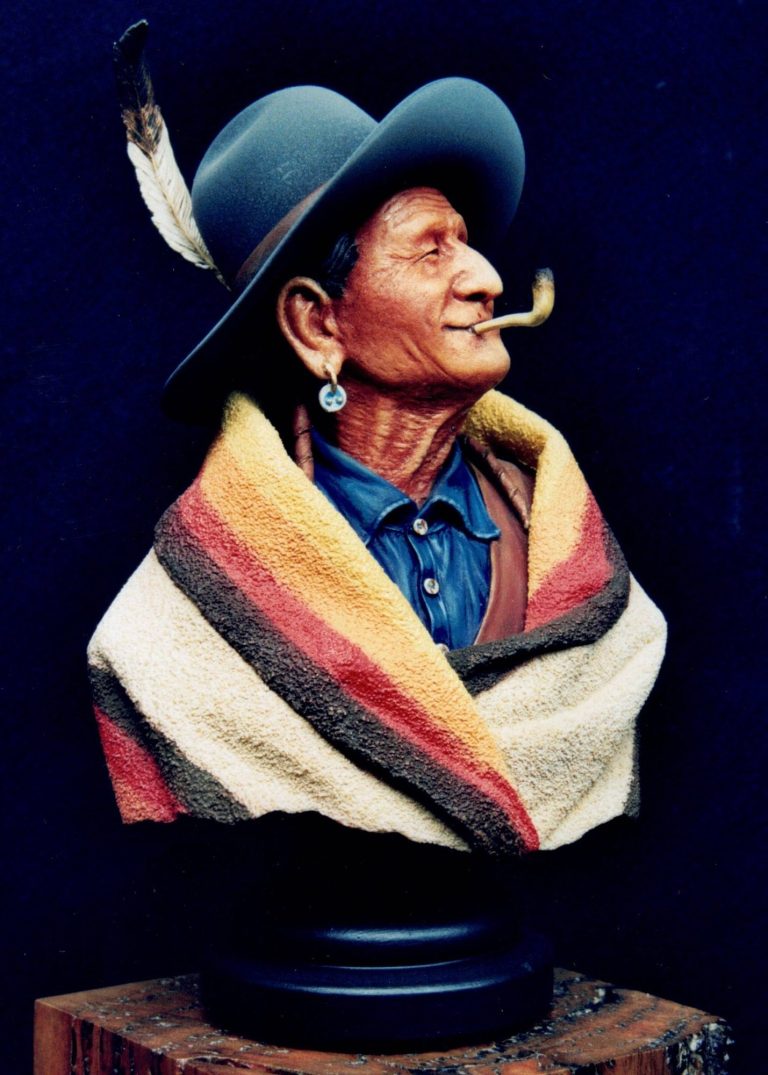
Once dry I added the buttons, aiming for a pale off white colour with fine lines of dark brown running through each one to imitate bone.
The two parts of the hat were fastened together and mounted on a wooden dowel with some Blu-tac so that I could add paint with an airbrush.
I began with a solid black colour, built up in several thin coats, and then added small amounts of white into the cup of the airbrush, mixing it with the black paint that was already there, and so creating a gradual lightening of the colour to a pale grey.
The underside of the brim was left very dark, whilst the upper sections, particularly the outer edges of the brim and the upper sections of the bowl of the hat were brought up to be quite pale.
Once the black / grey areas were painted, I used a fine brush to paint the leather hatband with oil colours.
The Trade Blanket cloak was painted with an airbrush, establishing the pale cream colour first, and then masking off the areas that I wanted to remain that colour before adding the yellow colour. More masking to keep those areas along with the cram colour, and then I sprayed the red on, and then more masking to finally arrive at the addition of the dark brown.
I cant’ describe the nervousness I felt when the time came to remove all that masking tape, because up until that point I really didn’t know if the masking would have worked properly, with little or no creep of paint under it’s edges die to the deep texture detail on the blanket, and whether I’d got the lines in the colours even enough to look realistic.
Fortunately it had all worked OK, and looking back, the only thing I could have added was some washes of dark colours to make more of the folds in the material.
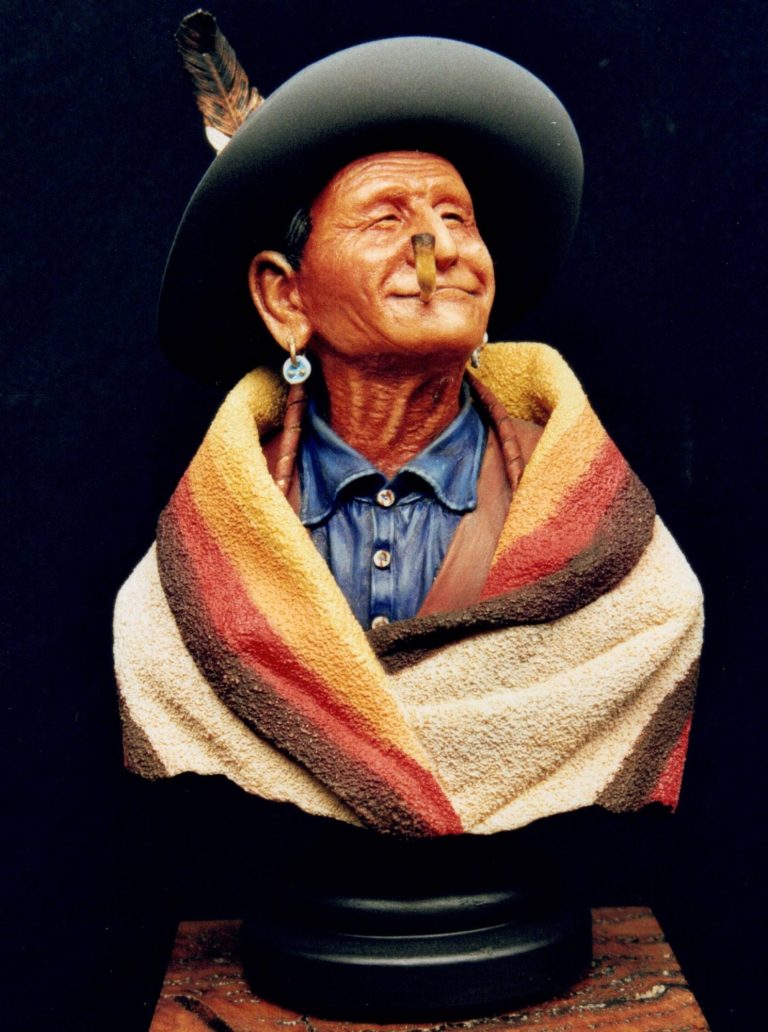
With the blanket painted and dry, it could be slotted over the head, and the small details like the twisted hair coverings, eagle feather for in the hatband, earrings and clay pipe painted and added before finally adding the hat.
I used the, small resin pillar that is provided with the kit, to mount the model on a craggy wood plinth that I felt matched the model’s weather worn features, and made a nameplate out of Milliput, rolling this out whilst soft and texturing the edges to look like an animal skin, and draping it over the front of the base whilst the putty was still soft.
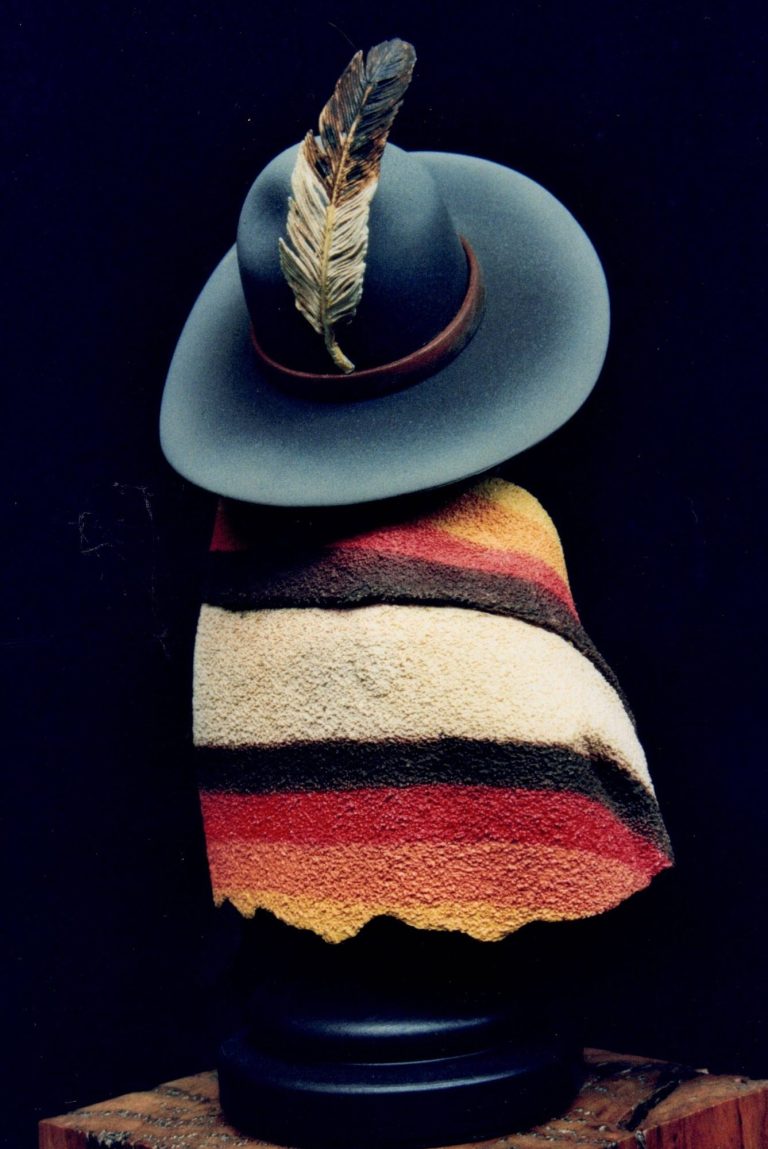
Final thoughts.
This is a great piece, one that I felt held a bit of a landmark in historical bust modelling. The popularity it gained on release – there were eight or nine of them in the competition at Euro Militaire the year this kit came out – was something to see, and the diminutive size sometimes surprised people that were seeing it on display for the first time.

I gained a Best of Show at the Huddersfield Model Show for this piece, although I really feel I can’t take much credit for the award, the work having been done by Poste Militaire’s sculptor’s skills ( Julian Hullis ) swaying the judges more than my skills with a brush.
Although I managed to get a second copy of this kit, I no longer have the box art. Rob Henden who painted the original piece for that had asked if anyone had the slip cover, as he neither had the original model he’d painted for Poste Militaire, nor did he have a copy of the box art. I sent it to him a good few years ago, because let’s face it, he inspired so many modellers with his painted rendition of the model, he deserved to have a record of it in his collection.
Will I paint the second one of these I have in the grey army ?
I hope I get time to do that. I’d like to see if I can do anything different or better now twenty-five years later.
But we’ll have to see. There’s a lot of cool models stored away on the grey army shelves, all clamouring for attention, all deserving their chance to be painted.
And there’s the original Blood Warrior still sitting there too, with its many, many separate feathers…… Makes me nervous just thinking of attaching them.
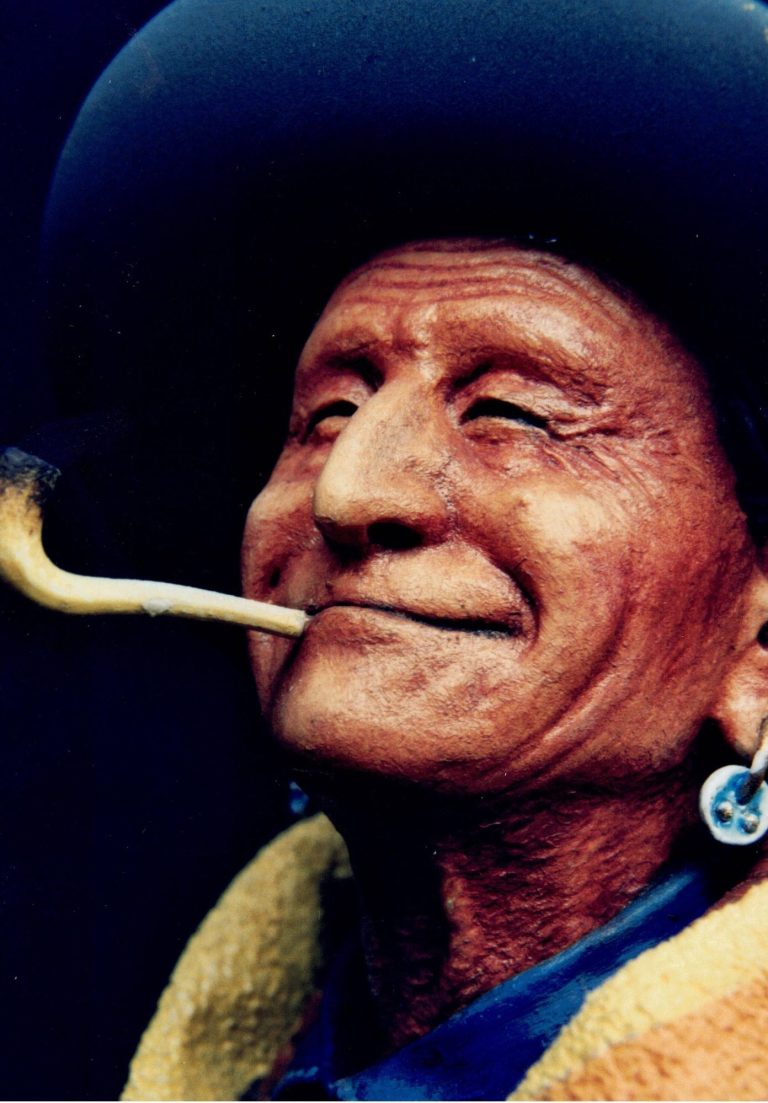


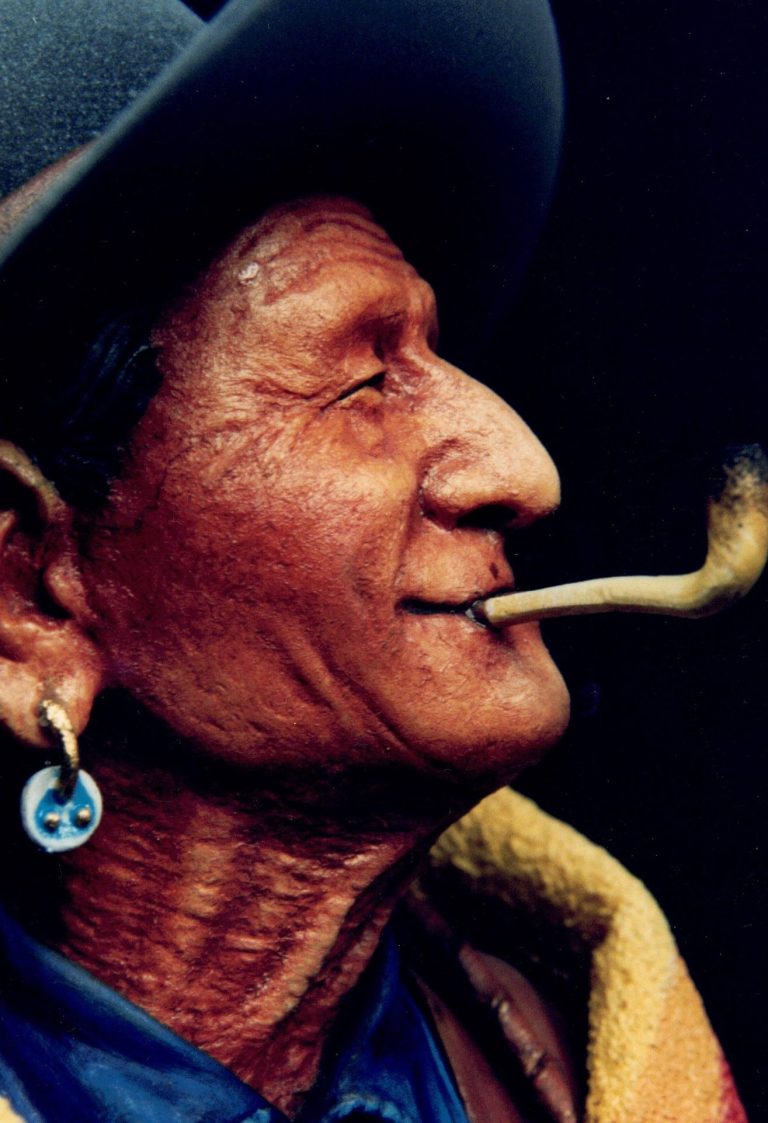

We need your consent to load the translations
We use a third-party service to translate the website content that may collect data about your activity. Please review the details in the privacy policy and accept the service to view the translations.